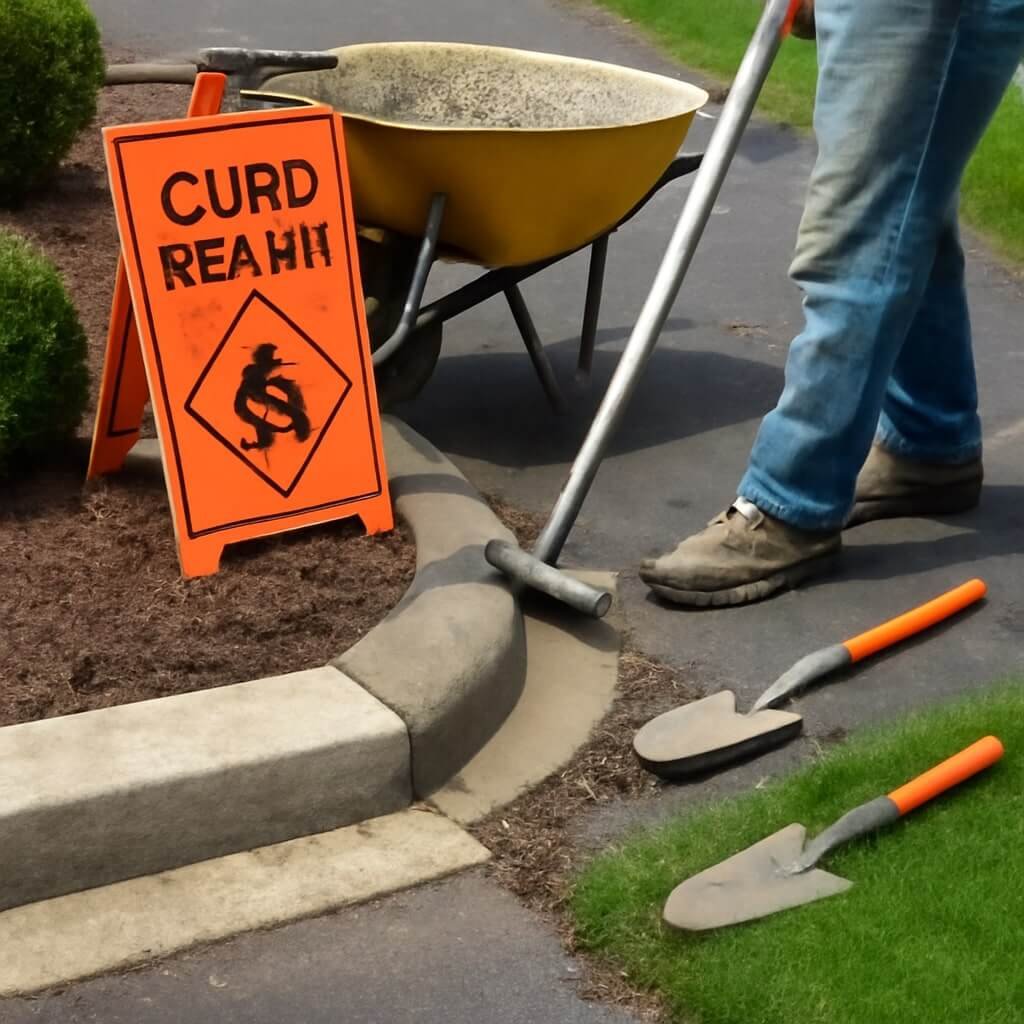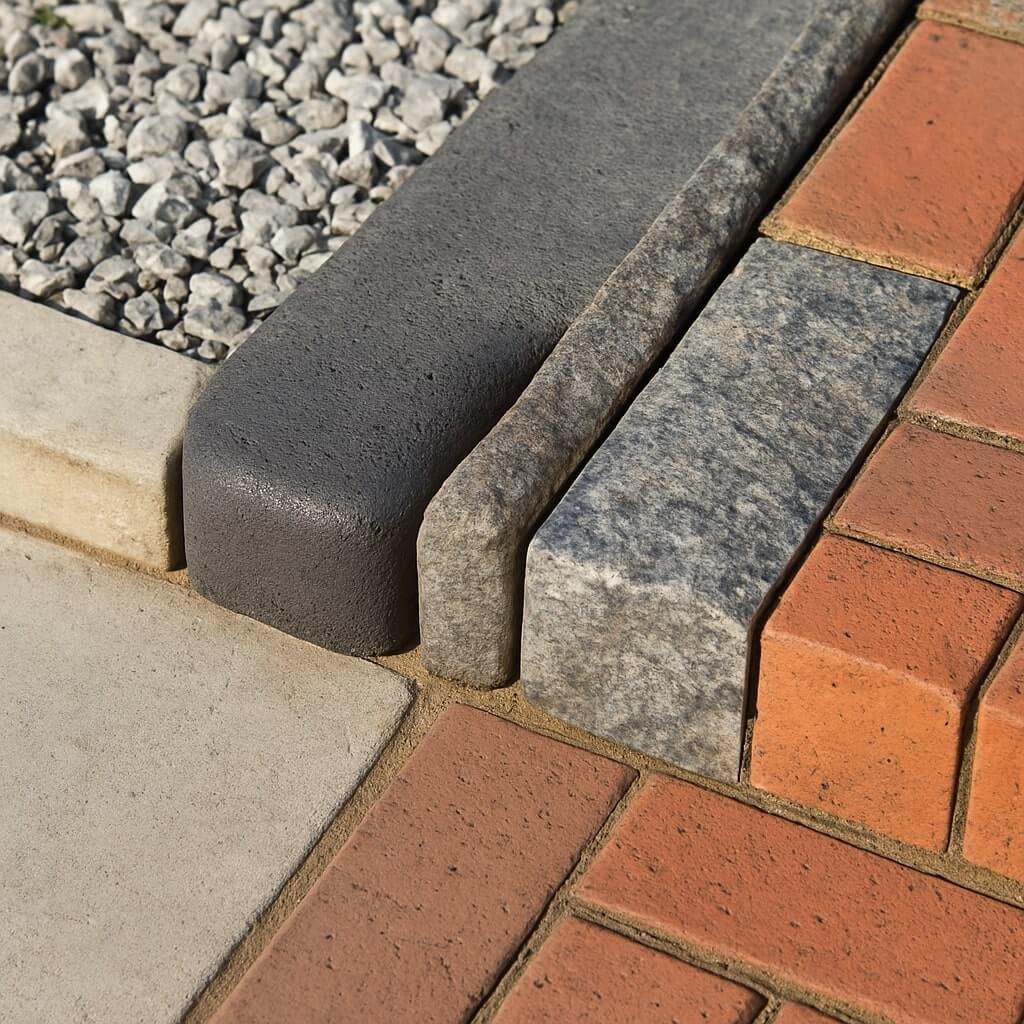Curb improvement plays a vital role in boosting both the functionality and visual appeal of roads, parking lots, and sidewalks. Whether you’re a property manager, municipal planner, or homeowner, choosing the most durable materials for curb enhancement is essential to long-lasting results and minimised maintenance costs. In this guide, we’ll explore the top-performing materials, their strengths, applications, and how to make the right choice based on specific project requirements.
Why Durability Matters in Curb Construction

Durable curbing prevents issues like cracking, chipping, or disintegration due to weather, vehicle traffic, and erosion. Long-lasting materials reduce:
- Maintenance frequency
- Replacement costs
- Safety hazards
- Aesthetic degradation
Investing in high-durability materials from the outset ensures lower lifecycle costs and improved return on investment for any curb enhancement project.
Top 6 Most Durable Materials for Curb Improvement
1. Concrete (High-Strength Mixes)
Best for: Urban streets, parking lots, industrial zones
Concrete curbing, especially when reinforced with steel and made with high-compression mixes, is one of the most reliable choices. It withstands heavy loads, resists erosion, and offers decades of service life.
Pros:
- Exceptional compressive strength
- Customizable shapes and finishes
- Resistant to weather and freeze-thaw cycles
Cons:
- Susceptible to cracking without proper jointing
- Higher initial cost compared to asphalt
2. Granite
Best for: Historic districts, high-end landscaping, commercial zones
Granite is a premium, natural stone known for its incredible durability and timeless appearance. It’s almost impervious to weather, chipping, and chemical corrosion.
Pros:
- Longest lifespan (over 50+ years)
- Visually appealing
- Eco-friendly and recyclable
Cons:
- High upfront cost
- Requires skilled installation
3. Asphalt
Best for: Temporary installations, roadsides, rural areas
Asphalt curbs are cost-effective and easy to install, though they typically lack the longevity of concrete or stone. They’re ideal for areas with low vehicle traffic.
Pros:
- Inexpensive
- Quick installation
- Flexible in colder climates
Cons:
- Shorter lifespan (10–15 years)
- Prone to edge crumbling and oil damage
4. Steel-Edged Curbing
Best for: Driveways, modern landscapes, flexible design needs
Steel edging offers a clean, industrial look and is particularly durable when galvanized or powder-coated. It’s commonly used in landscape design and light traffic areas.
Pros:
- Sleek, modern appearance
- Easy to shape
- Rust-resistant when treated
Cons:
- Can shift without secure anchoring
- Limited load resistance
5. Precast Concrete Blocks
Best for: Custom installations, low-traffic pedestrian zones
Precast concrete curbs are manufactured off-site, ensuring uniform quality and quick installation. Their durability is comparable to poured concrete when properly installed.
Pros:
- Quality-controlled manufacturing
- Fast installation
- Reusable and modular
Cons:
- May require anchoring or joint sealing
- Limited customisation once produced
6. Brick or Paver Curbing
Best for: Decorative and residential projects
Though not as durable as granite or concrete, bricks and pavers offer aesthetic versatility. They’re suitable for pathways and garden edging.
Pros:
- Highly customizable design
- Easy to repair (individual unit replacement)
- Wide colour and shape variety
Cons:
- Prone to shifting and settling
- Requires sealing to enhance durability
Choosing the Right Material for Your Project

When selecting curb materials, consider the following:
| Factor | Key Considerations |
|---|---|
| Traffic Load | Heavy vehicle traffic needs high-strength concrete or granite |
| Aesthetic Goals | Brick, granite, or steel offer decorative appeal |
| Budget Constraints | Asphalt and standard concrete are cost-effective |
| Maintenance Tolerance | Granite and precast curbs need minimal upkeep |
| Climate Conditions | Freeze-thaw zones favor flexible or non-porous materials |
Frequently Asked Questions (FAQs)
What is the most durable material for curbs?
Are precast curbs as strong as poured-in-place ones?
Is asphalt a good material for long-term curb use?
Can I use steel for high-traffic curb areas?
What curb material is best for cold climates?
Conclusion
Selecting the most durable materials for curb improvement is a strategic decision that depends on environmental conditions, usage requirements, aesthetics, and budget. For maximum longevity and low maintenance, granite and high-strength concrete are top-tier options. However, innovative applications using steel or modular precast blocks can offer performance and design flexibility.
With the right materials and installation methods, your curb infrastructure can provide decades of service, improve safety, and enhance the overall appeal of your space.



